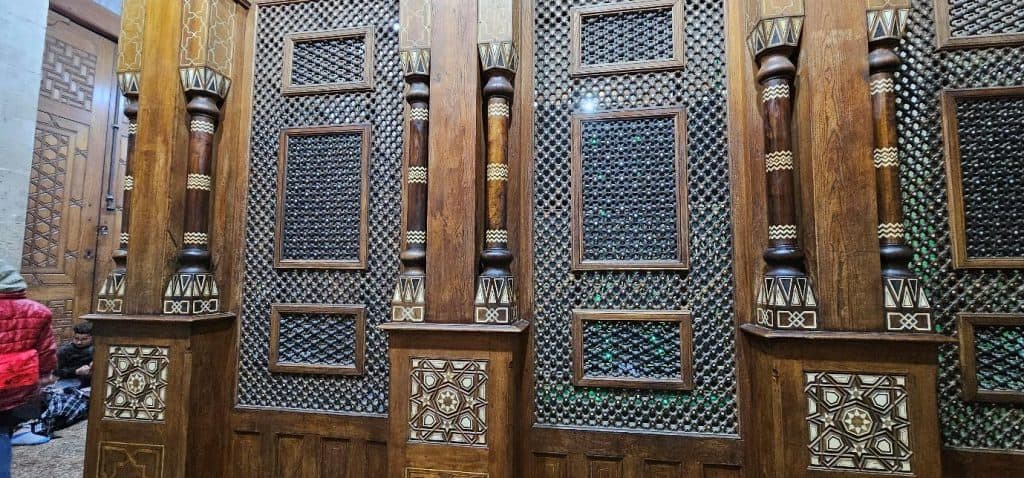What started as a tentative proposal by my wife to go on a girl’s trip to see the pyramids, turned out to be a full-blown 7-night-stay family rihla (travels) to Egypt. A convoy of 10 of us, which included my mum (aged 70), my wife’s parents and her sister set off on a tour of Cairo and Alexandria (136 miles northeast of Cairo) for the February half-term. Egypt didn’t disappoint. It shattered my kids’ preconception that the whole world was like the UK, ordered, well-signposted and with relatively safe roads. But it also had great charm as a place steeped in ancient wonders, civilisations and culture. Here are some of my reflections and insights into our trip.
Flying from Luton to Cairo
Egypt recently opened up a new route for EasyJet flights to Cairo-Sphinx airport. Cairo-Sphinx isn’t Cairo’s main airport but it’s relatively new, small and quiet nature makes for an easy route. It’s nothing like the hurried experience of a plane taking off every 10 minutes typical of Luton Airport at peak times and is more like flying into a sleepy and unassuming airport like Rennes in France. The 5-hour journey landed around 6.55 pm Egypt time, which was well after sunset in Cairo. With Egypt being +2 hours ahead of the UK in February, you end up with effectively 7 hours lost in travel. We got our visas ahead of the trip which made border control relatively straightforward, save for the queuing. There is no automated service, and passports require stamping and disembarking cards, which can be a drag.
The weather was pleasant, around 20 degrees Celsius, which is typical for February. We took light jackets or jumpers which were useful for evenings when it was much cooler and for boat trips. Sunglasses are also worth taking. Roads are uneven and there’s plenty of climbing to be done, so comfortable footwear is highly recommended. There’s no need to take cash, unless it’s specifically to pay for things like the driver for private hires, as there are plenty of ATMs. We felt safe throughout even whilst we roamed Cairo and Alexandria at night. But get ready to haggle when buying anything unless you are inside shopping malls which are generally fixed prices. Egyptologists and tour guides are always around making themselves available for their services, but we didn’t feel the need to use them as we’d previously researched all the places that we wanted to visit.
Getting around
We prearranged a 14 seater Hiace with an accompanying driver to be with us every day from picking us up from the airport to dropping us back at the airport for departure, and all the journeys and sightseeing in-between. Many reliable and well-organised companies do this at competitive prices, which can be found on social media. We agreed the full 8-day itinerary and an all-inclusive fixed price and asked for a driver who would be patient and would prioritise safe driving. Egypt needs foreign currencies right now (more on the economy later), so be sure to take British Pounds in cash to pay the driver. Thankfully, our driver turned out to be exactly as we required, patient, safety-minded, and friendly.
Ancient Egypt
Every kid growing up in the UK learns about ancient Egypt at primary school. That’s not surprising. We know about Ancient Egypt because they left so much about their society (over 5000 years of it) so well preserved, better than any other ancient civilisation, whether Chinese, Indian, Aztec or anyone else. There is also plenty of Greek and Roman history in Egypt, as well as of course 1400 years of Islamic civilisation from the mosque established by the companion of the Prophet Amr ibn al-‘As to today. Many Prophets like Yusuf (Joseph), Musa (Moses), Harun (Aaron) as well as significant historical figures like Alexander the Great lived in Egypt. In this sense, Egyptians are an incredibly honoured people to have such a lofty heritage, perhaps unsurpassed by anyone else.
Cairo and Alexandria boast some of the best museums in the world. We visited all of the major ones, which are listed below. Aside from museums, there are many monuments, buildings, streets, markets, mosques and architecture all around Cairo. As you walk in and around them, or see them from afar, you get a sense of awe knowing that you’re seeing and touching something today that many people for hundreds and thousands of years have done before. In all, we probably visited over 30 sites, which have left an indelible mark in our memory.
The most poignant, goosebump moment for me was staring directly into the eye sockets of the pharaoh Rameses II thinking that they would have witnessed the Prophets Musa and Harun.
Museum of Islamic Art in Cairo which is dedicated to Islamic arts and history.
Egyptian Museum of Antiquities – this is the main old museum in Cairo which houses many of Tutankhamun’s relics, including his hold mask, as well as a very diverse selection of artifacts from Ancient Egypt.
National Museum of Egyptian Civilisation (NMEC) – this is a wonderful museum, especially as it houses many of the mummies of the pharaohs, including Rameses II. It was opened in 2017 and so has a very modern feel about it.
Grand Egyptian Museum (GEM) – this is the biggest museum in the world, with plenty of high-tech design features, but it is only partially open with only about 100 artefacts on display and a Tutenkamun show to see. It’s also the most expensive museum to visit.
Coptic Museum – this is a museum in Coptic Cairo, Egypt with the largest collection of Coptic Christian artefacts in the world, including a very old Bible.
Military Museum – located in the Saladin Citadel and houses artefacts from military expeditions, wars, and uniforms, as well as what is reported to be a replica of the sword of the Prophet.
Graeco-Roman Museum – this is a museum in Alexandria that houses many artefacts from the Graeco-Roman period, including Cleopatra and Alexander the Great.
Public infrastructure
Travelling around in Cairo and Alexandria, I was taken aback by Egypt’s lack of economic development. Public infrastructure is poor. The roads are chaotic, jammed with motorists and people, all trying to get moving at the same time. Everyone uses their horn to signal, so the noise pollution is unrelenting. There are few traffic lights and road markings. We asked our driver about how an ambulance would get through in an emergency. He replied, with a wry smile, “They just die.” In other words, there is no way ambulances can get through and probably there are very few of them; we only saw a single ambulance despite being out and about for 12 hours every day. We saw how bad things are from afar as on one occasion we watched in agony a man who seemingly collapsed, literally being shoved into a passing car to be rushed into a hospital. The only public hospital we saw had people queuing outside, and a makeshift sleeping area outside for those visiting.
Not all areas were like this such as in New Cairo, but most of what they call, using the Americanism, “Downtown Cairo” for old Cairo is like this. A friend from the UK who teaches at one of the international schools invited us to dine with him in New Cairo. We noticed how the area was well-developed and felt more like Dubai.
The housing in most of Cairo and Alexandria is made of high-rise blocks that are crammed into each other, and, from the outside at least, look somewhat untidy or unfinished, as if they need rendering.
The bus system is made up of small people carriers which pick up passengers from the side of the road. Bus drivers use hand gestures to indicate the route they are taking, which by design isn’t suitable for tourists, especially in large groups. There is a tram system, which looked decent, but the routes were limited and service schedule information wasn’t easy to get hold of. Similarly, there is an underground metro system, but they are not well-signposted.
Travel by boat on the River Nile to my surprise isn’t as popular with locals as one would have expected, as we see in the River Thames for comapsrison. But for tourists, there are plenty of river cruises, which mostly in the night. We took a private boat for a tour during the day.
Economic development
With 107 million citizens, Egypt is Africa’s biggest economy and ranks 23rd in the world. 95% of the population live in sprawling urban areas on the bank of the River Nile on its various branches. Unemployment is around 7-8%. Its main industries are oil, gas, fertilisers, textiles and tourism. The service sector is its biggest employer, followed by agriculture and industry. To run Egypt requires almost twice as much as it generates through economic activity, which means it is heavily reliant on borrowing to make ends meet. Its GDP in comparison to the UK is only 10% of the UK.
Over the last few years, the government has been busy building new highways, where toll charges of around 2 Egyptian Pounds operate. Smaller cities around Cairo’s old town have also sprung up. One of which is literally called “6th of October City” named in commemoration of the recapture of the Sinai area from Israel in 1968. Another one is called “El Sheikh Zayad City,” which is named after the ruler of Abu Dhabi, Zayad bin Sultan Al-Nahyan, who is, as our driver described, “loved by Egyptians” as it was his generous donation through the Abu Dhabi Fund for Development that funded the construction of the city in 1995. More recently, again with the help of rich foreign neighbouring countries, this time the United Arab Emirates (UAE) funding, plans are underway to create a new city focused on tourism, called “Ras Al-Khaimah,” in the northwest coastal region. There are only a meagre 15 million tourists that come to Egypt each year which compares poorly to the UK’s 40 million. But given Egypt’s weather and exquisite coastlines, including the Mediterranean Sea, and being only a couple of hours away from mainland Europe, there is huge potential to develop tourism.
I asked our driver what’s gone wrong with Egypt’s economy, he identified the root cause as the same factors as what gave rise to the Arab Spring in Egypt. Knowing that I was intrigued, he explained further that the country hadn’t develop much because of poor government.
It turns out, Egypt is in heavy debt, and has very little, if any, cash reserves left for much-needed investment in infrastructure, welfare and education. With inflation at around 4% and the Egyptian pound in free fall, Egypt has also been shut out of international financial markets and forced to seek an IMF bailout. Egypt secured some more loans from the IMF as part of which had to devalue its currency. So about six months prior to our visit in February the exchange rate for every 1 British Pound moved from its long term rate of 20 to 40 Egyptian Pounds. Since our trip this was worsened further to 60 Egyptian Pounds. This has pushed inflation up even more in recent months. So foreign investments like that of the UAE will be much-needed help. But I also found that the inflationary impacts weigh heavier on imported goods rather than goods produced within Egypt, which is comforting to many ordinary Egyptians.
Culture
Today’s Egypt has no discernible culture remaining from ancient Egypt, except for the tremendous number of brilliantly preserved relics of the past. Nor is it necessarily a culture overtly steeped in its more recent history of Islamic civilisation. Cairo was where Imam Al-Shafi’ taught and produced many of his masterful works. It is also the place of the great Jami’ Al-Azhar – one of the leading institutions of Islamic learning in the world today and historically. Salah-Uddin Ayyubi (Saladin) lived here too. In the Travels of Ibn Jubayr, he writes how Salah Uddin used to pay for student’s welfare from state funds – aka maintenance grants. It was the Mameluke army and statecraft of Egypt that put an end to the advance of the marauding Mongols. No other Muslim army was able to achieve this. Countless great scholars lived here throughout history, like Ibn Ata’Allah al-Iskandari (d. 1309), Badr al-Din al-Ayni (d. 1451), Taqi al-Din al-Subki (d. 1355), Ahmad Al-Rifa’i (d. 1183) the founder of the Rifa’i sufi order which is widespread in the Balkans and Middle East), the great hadith master Ibn Hajar al-Asqalani (d. 1449), Imam al-Tahawi (d. 933), the great Hanafi theologian, and so on. Even in more recent times, Egypt has produced scholars that have significantly contributed to Islamic knowledge, the likes of the reformer Muhamamd Abduh (d. 1905), Yusuf al-Qaradawi (d. 2022), Muhammad Abu Zahra (d. 1974), Zaki Badawi (d. 2006) who is well known as an Egyptian-British scholar, and so on.
Today, whilst the azan can be heard from a nearby mosque from just about anywhere, it’s nothing like it is in Istanbul or Bangladesh, where a cacophony of azan from every direction can be heard all at the same time in mesmerising melancholy of calling to God.
But unlike other countries, women and young girls seem much more at ease wearing the headscarf, even in the more affluent and cosmopolitan areas like New Cairo. Moreover, unlike countries like Saudi Arabia, there is a more mature and easy interaction between the genders, which I found quite refreshing. Though, much like other Muslim countries, male patriarchy is still dominant, albeit in a more mature and less-standoffish way.
English is not widely spoken, but in popular tourist spots, enough English is understood for basic communication. Egyptians are renowned for their hospitality and enjoy interacting with tourists, making knowledge of Arabic beneficial. These interactions also provide valuable opportunities for children learning the language to practice in real-life situations.
Much of the daily culture of ordinary Egyptians is still dominated by widespread poverty and a lack of economic opportunities. Though, this is far better than other East African countries like Sudan or parts of India and Bangladesh.
Food, including fruits and veg, and restaurants are plentiful. Peaches, strawberries, guavas, mangoes, watermelons, grapes, oranges, beetroot, bananas and so on, can be found everywhere. There is a very efficient “Uber Eats/Deliveroo” service called “Talabat” which delivers food, goods and groceries in literally minutes, as we found. In Alexandria, there is an excellent supermarket store called “Gomra” in which you can find any food item. However, Gomra supermarkets aren’t’ as prevalent in Cairo. We only consumed bottled water as tap water is unsafe, especially for visitors unaccustomed to the bugs of Nile water. We also avoided salads as tap water is used to wash them and plenty of people on social media often complained about “Egypt belly”, though towards the end of our stay, we didn’t take as much care.
The Great Pyramids of Giza – one of the seven wonders of the ancient world. This one is the Pyramid of Khafra, which is the largest in the world. The picture below is a view from the Sphinx where the Pyramids of the Khafra and Kufu can be seen.
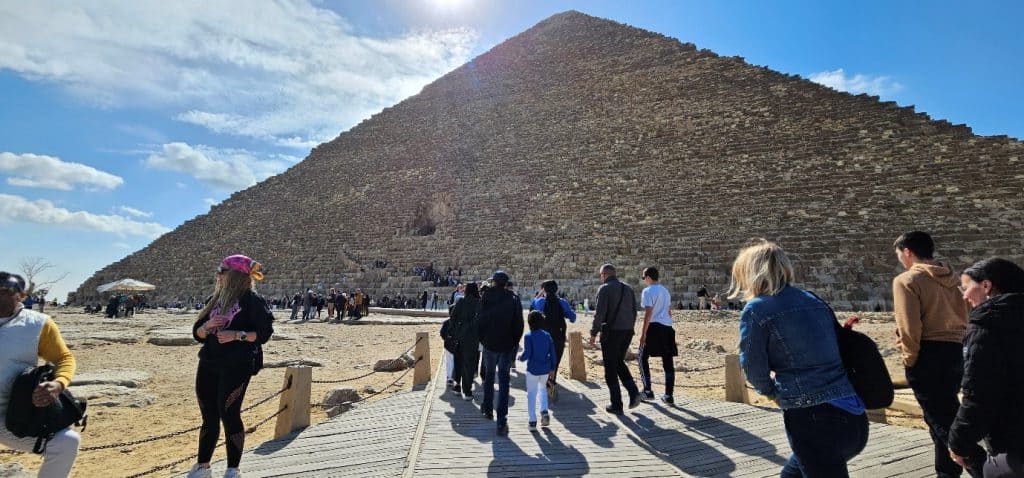

The pyramids at Saqqarah – there are many small pyramids dotted around the Saqqarah, and the most famous one is the “Step pyramid.” The Saqqarah served as the main necropolis (designated cemetery) for the ancient Egyptian capital of Memphis which is nearby.
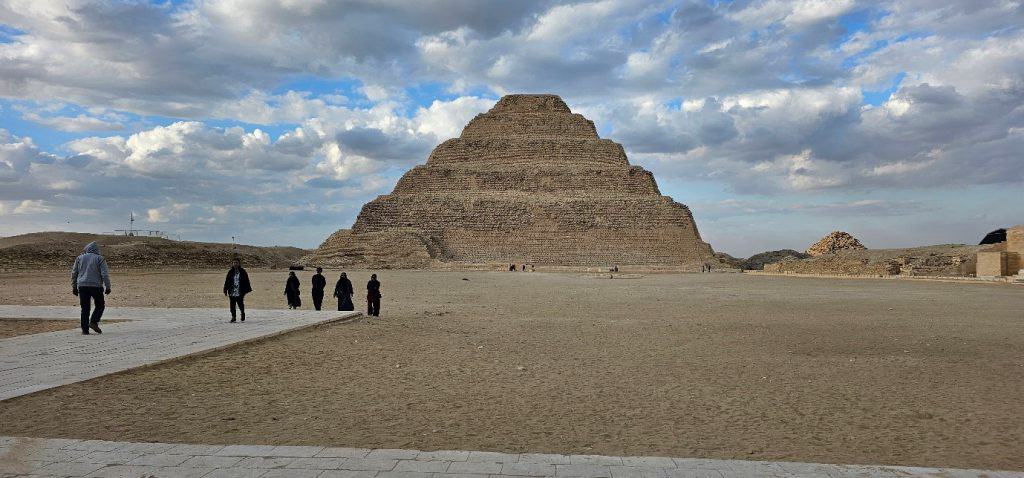
8th century Qur’an written on parchment at the Museum of Islamic Arts
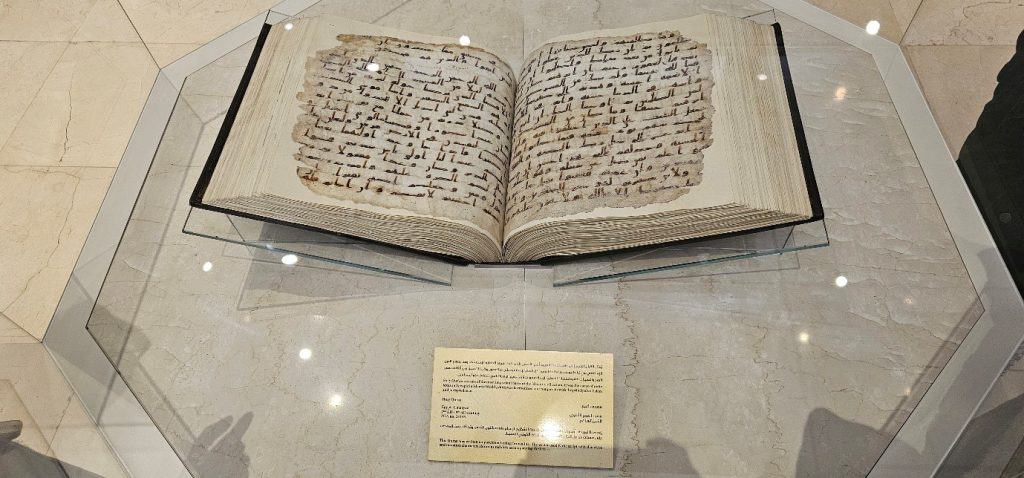
The huge courtyard of Ibn Tulun mosque – one of the oldest mosques in Cairo and Africa, which was reportedly completed in 878/9.
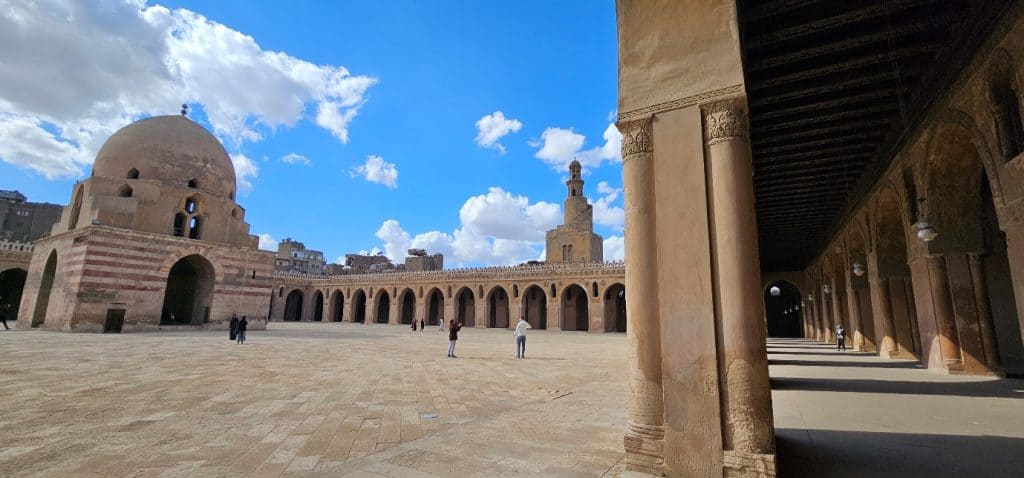
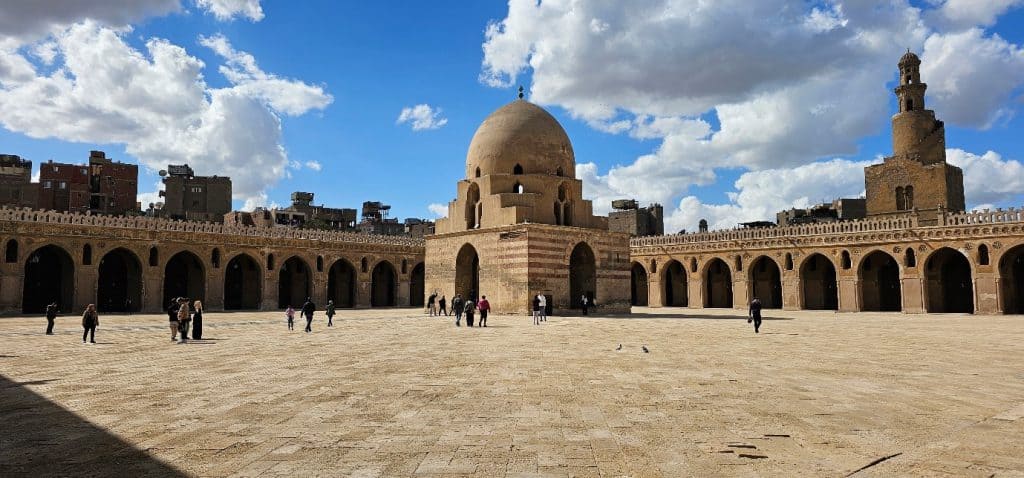
Al-Hussein mosque – behind the doors is the place where the head of Imam al-Hussein, the grandchild of the Prophet, was reported to have been brought to by Imam al-Hussein’s daughter Zaynab following the fight at Karbala, Iraq. The mosque is opposite Al-Azhar mosque and is on the famous Al-Muizz Street, which straddles north to south of the old walled city of Cairo and dates back to the Fatimid times (10th century).
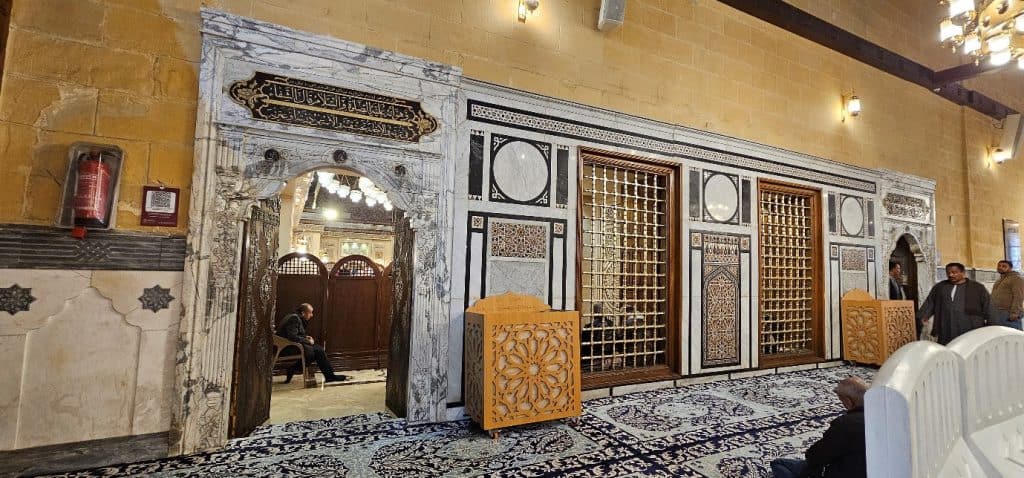
Inside the “Nasri mosque” or the mosque of Sultan al-Nasir Muhammad ibn Qalwun, completed in 1335. Located at the Saladin Citadel, the domes of the Muhammad Ali mosque can be seen in the background. The dome of the Nasri mosque is reported to have been designed to replicate the dome of the Prophet’s mosque in Madina.


Sultan Hassan mosque-madrasah, where we prayed Jumu’ah (Friday) prayers, was built between 1356-1363.
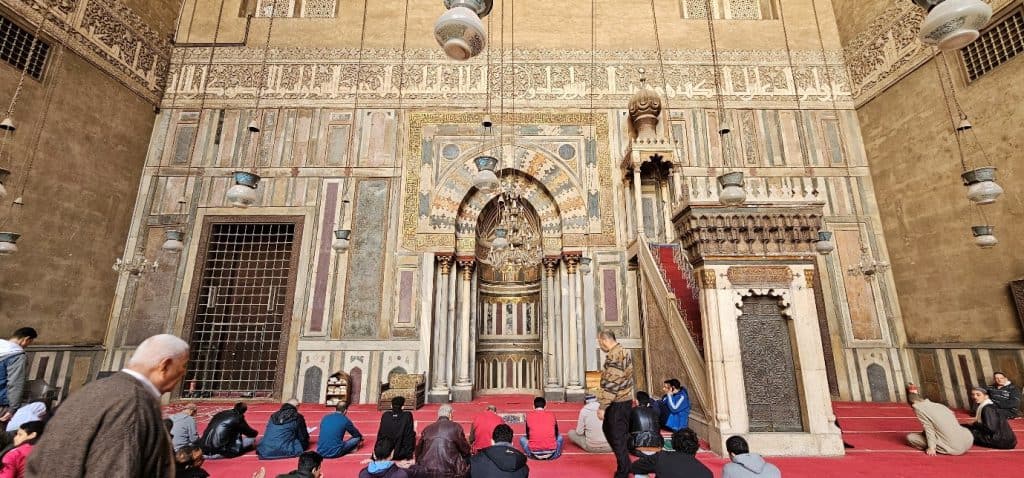
Daytime skyline of Cairo, seen from one of the hotels we stayed at.
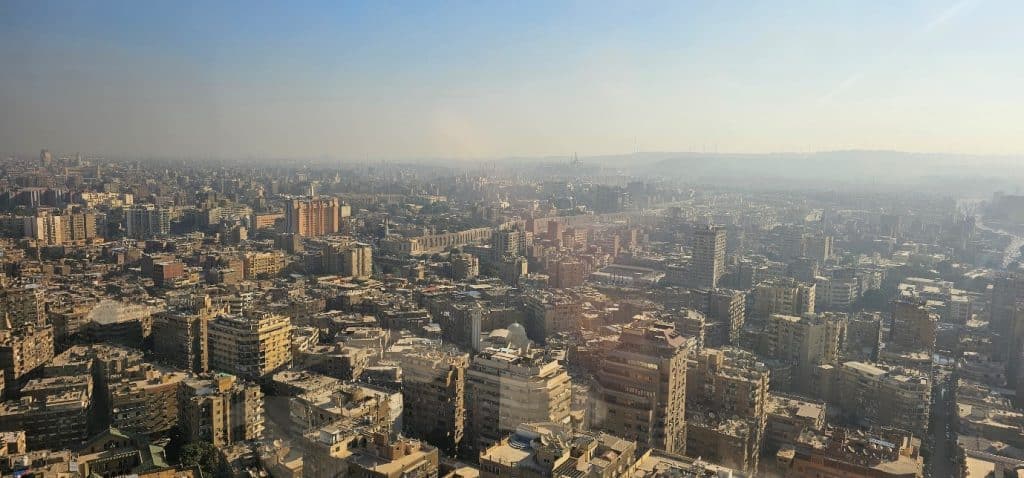
A typical breakfast in one of the hotels we stayed at.

The beautiful courtyard of Al-Azhar mosque at Maghrib time (sunset). This was my favourite place.
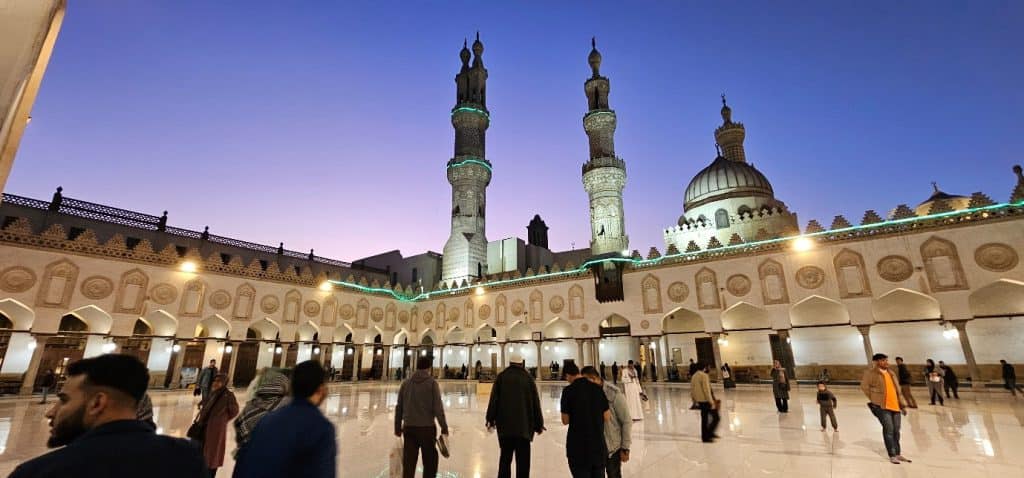
A 3000-year-old skeleton in the National Museum of Egyptian Civilisation (NMEC).
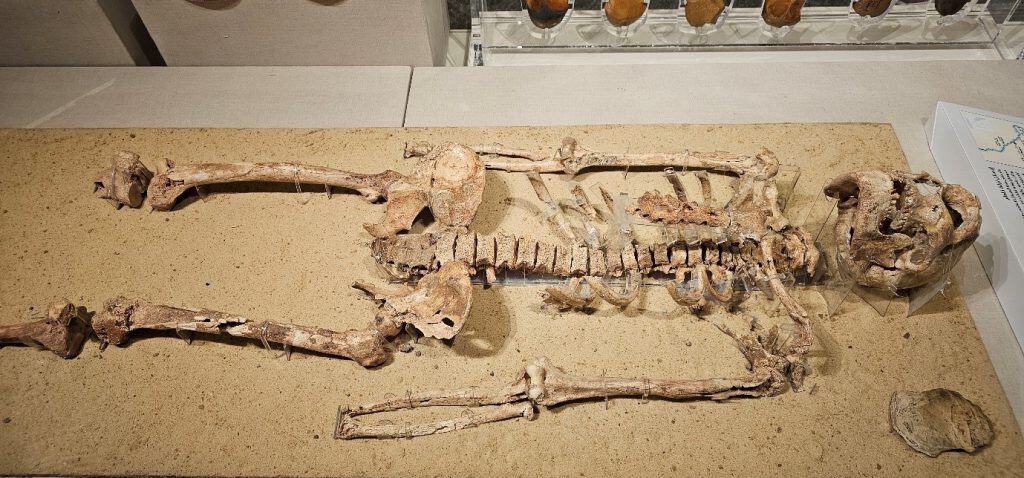
The carcass of a mummy. There are lots of these in almost all museums, this one is of Queen Ahmose-Merytamun (1525-1504 BC – 3500 years ago) at the Egyptian Museum of Antiquities.
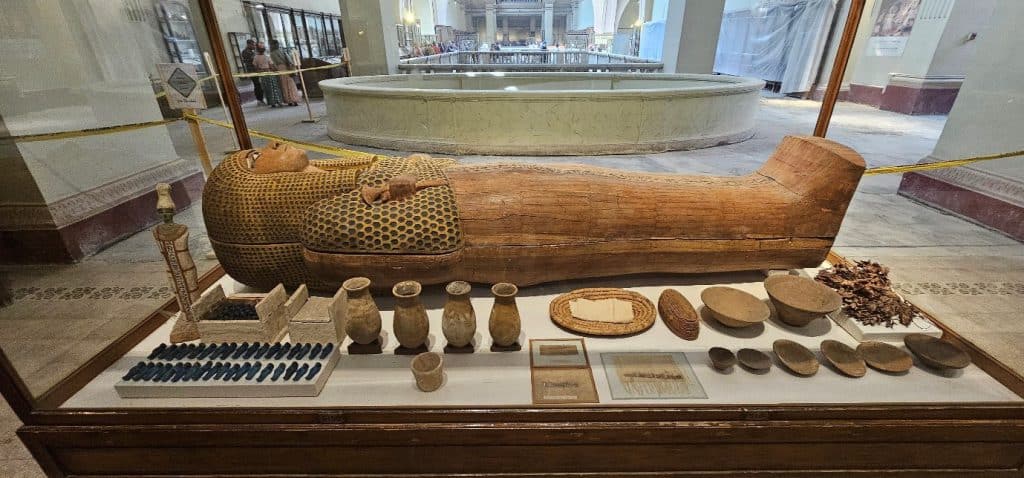
Stanley Bridge in Alexandria.
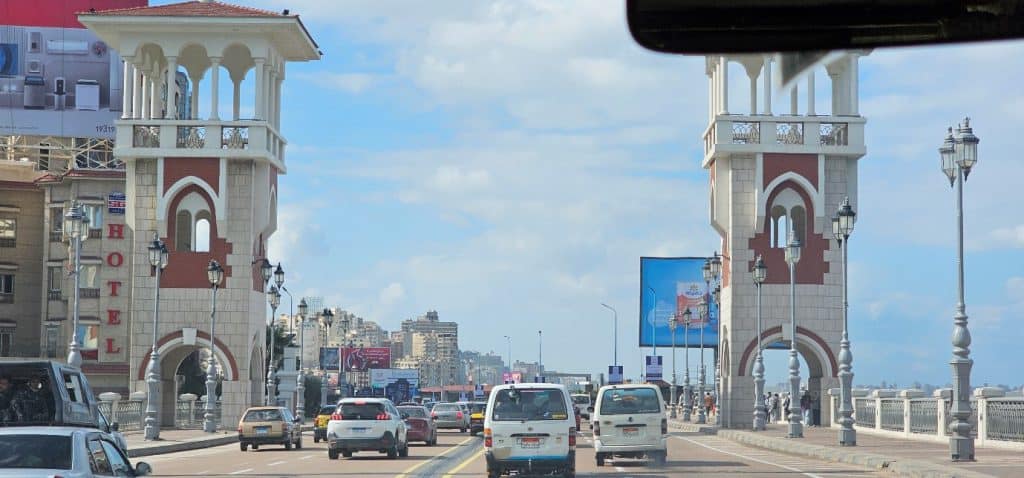
An opening through the Citadel of Qaytbay in Alexandria overlooking the Mediterranean Sea.
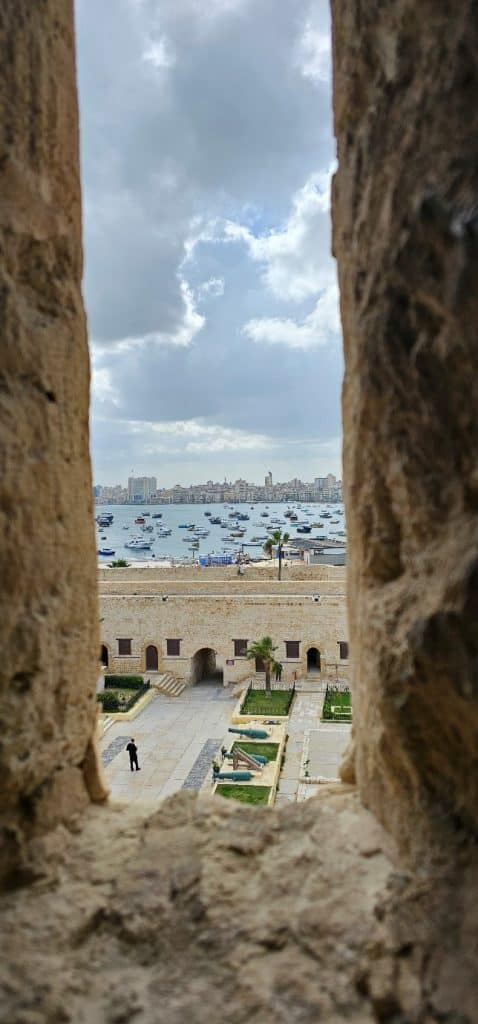
A burial chamber in the Catacombs of Kom el-Shuqafa in Alexandria.
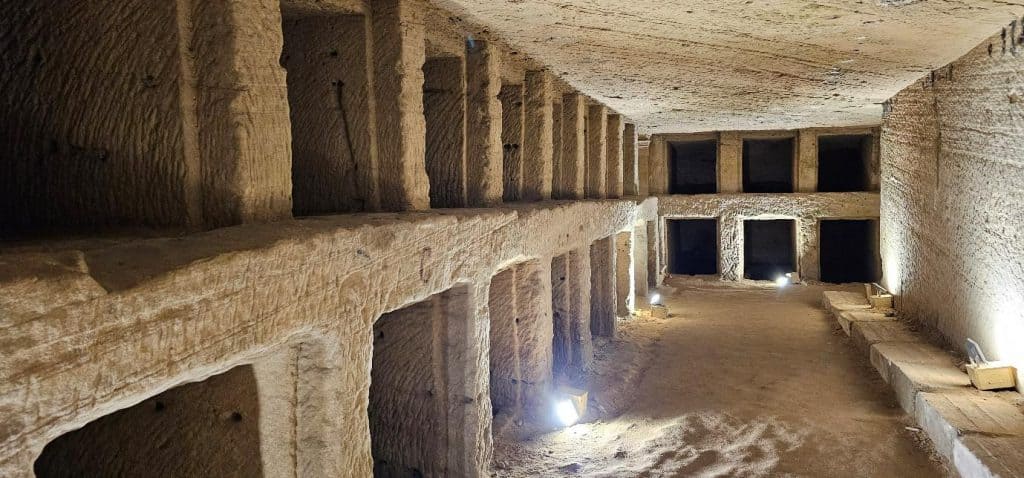
The presidential palace in Montazah Gardens in Alexandria.

Pompey’s Pillar in Alexandria.

Reportedly a replica of the Prophet’s sword on display at the Military Museum in Cairo.
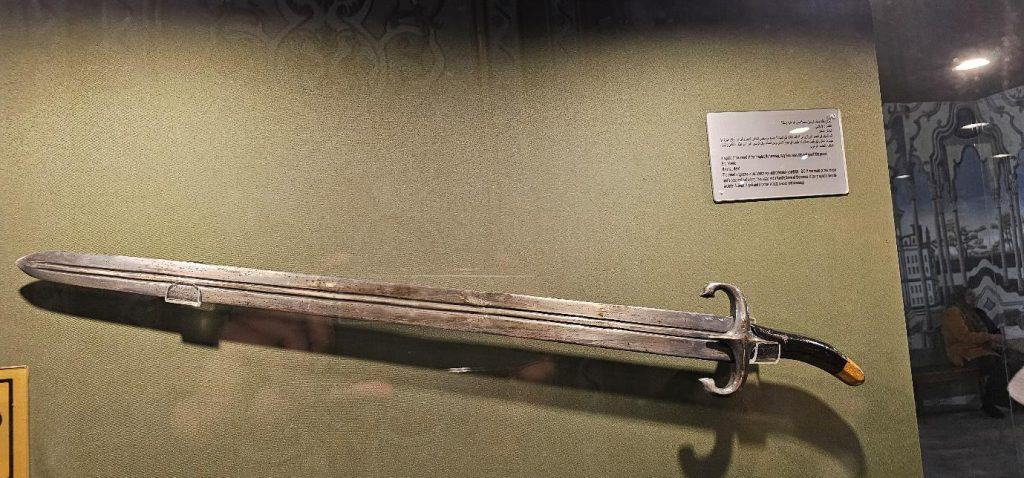
Courtyard inside and outside of the impressive Ottoman-style Muhammad Ali mosque, which was built between 1830-1848, located in the Citadel of Saladin.
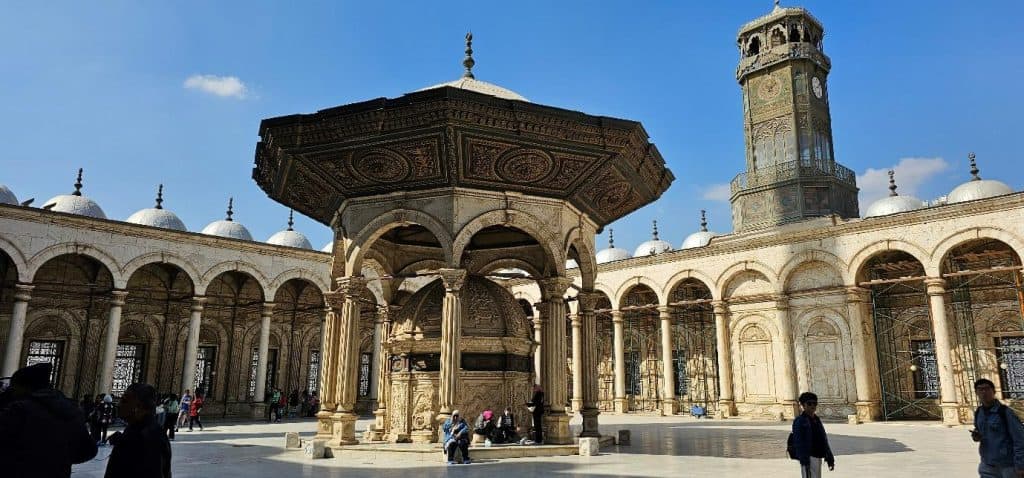
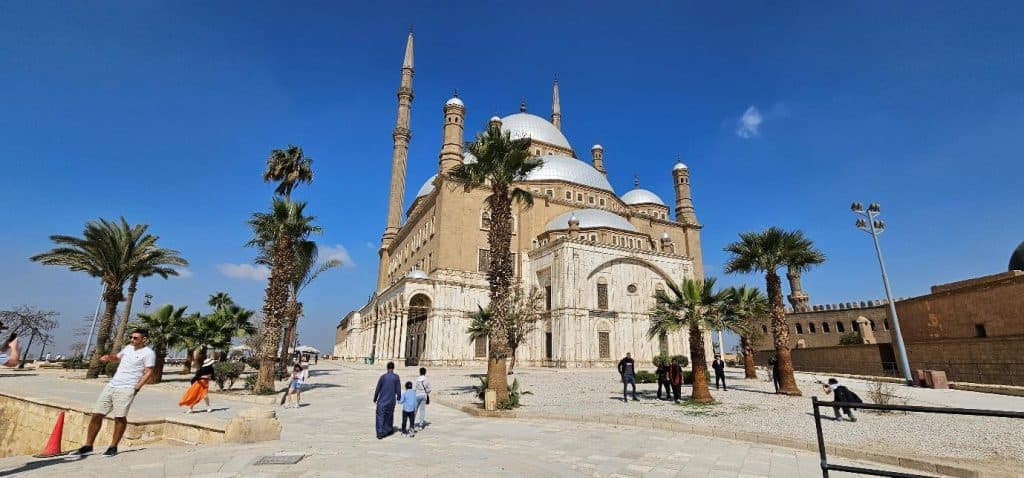
A portrait of Camp David, Maryland, USA, in 1978 at the Military Museum in Cairo, where President Jimmy Carter invited Anwar al-Sadat, the president of Egypt, to meet Menachem Bigen, the Israeli Prime Minister, to put forth a peace treaty for the complete retreat if Israel from Sinai.

One of the oldest copies of the Bible on display in the Coptic Museum.

Courtyard of Amr ibn al-‘As mosque – the first large mosque in Egypt and Africa, founded originally in 641, 21 Hijri. Imam al-Shafi’ also learned and taught here. Amr al-‘As was a companion of the Prophet, and played a leading role in conquering Egypt and other regions to the West.
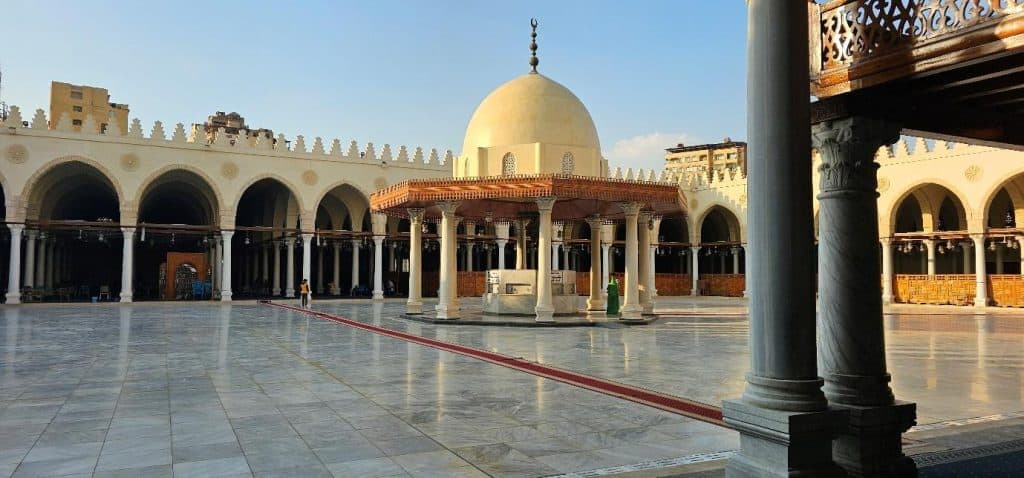
There are lots of hieroglyphics in almost all the museums. Here’s one at the Egyptian Museum of Antiquities.

A traditional Egyptian-style minaret of a mosque on the famous historical al-Mu’izz street.

Nightlife in New Cairo.

The maqam of Imam Ahmad al-Rifa’i at the Al-Rifa’i mosque, which is situated opposite the Sultan Hassan mosque and from which the Citadel of Saladin can be seen. Many famous scholars are buried in and around Cairo.
